After an American shot a British-owned pig in a disputed territory in the San Juan Islands, the two countries began gathering troops in a tense confrontation now known as the Pig War.
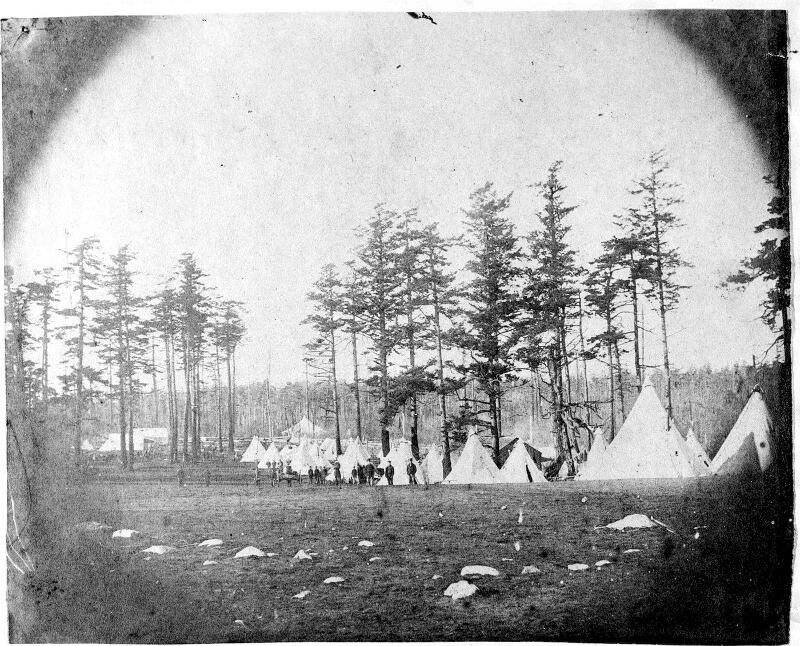
National Park ServiceThe American camp on San Juan Island during the Pig War, during which American and British forces nearly came to blows over a dead pig. 1859.
Almost 100 years after the Revolutionary War ended, the United States and Great Britain almost went to war again in the so-called “Pig War.” This time, the conflict arose not over questions of self-governance or taxation, but the death of a swine in a tiny, contested corner of the world.
In 1859, an American farmer shot a British pig on tiny San Juan Island, in the northern part of present-day Washington State. As tensions over the pig mounted, British warships gathered off the coast, and defiant Americans began to set up a military camp. For a brief moment, it seemed that the two nations might go to war over a pig killed while eating potatoes.
Fortunately, this conflict had just one casualty: the pig.
The Dispute Over The San Juan Islands
In 1846, the United States and Britain signed the Oregon Treaty to officially decide the borders between the United States and British North America (Canada). But its ambiguous language caused problems.
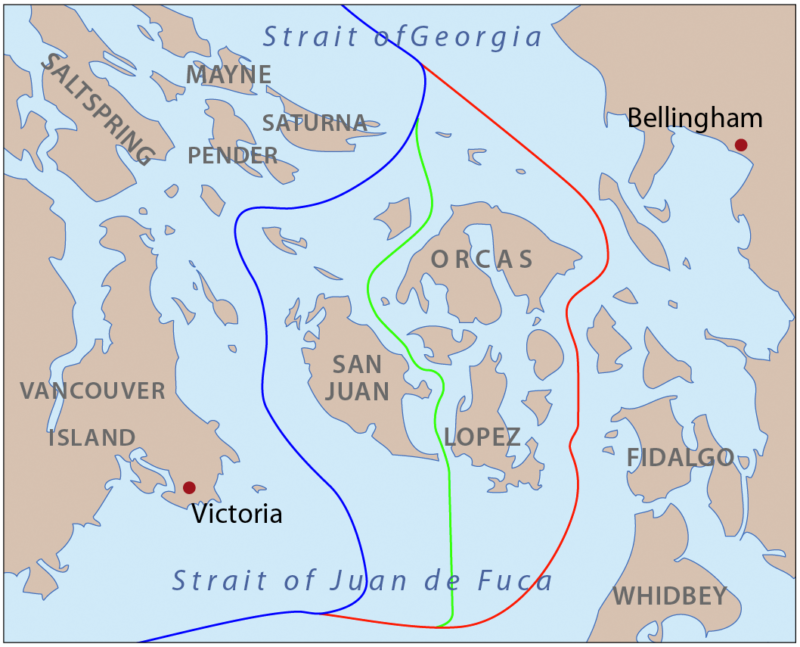
Pfly/Wikimedia CommonsAs this map shows, there are multiple channels that run south between the United States and Canada.
Though the treaty placed the “line of boundary” between the United States and Britain at the 49th Parallel, it also stated that the border would run “through the middle of the channel which separates the Continent from Vancouver’s Island, and thence southerly through the middle of the said channel and of Fuca’s Straits to the Pacific Ocean,” according to a memorandum by treaty negotiator Sir Richard Pakenham.
This posed some problems. There is not one channel leading south to the Strait of Juan de Fuca, but several. Rosario Strait cuts between the San Juan Islands and the mainland, Haro Strait lies between the San Juan Islands and Vancouver Island, and the four main islands of the San Juans are themselves also bisected by channels. Which channel did the treaty makers mean?
The treaty makers were probably aware of the ambiguous language. They possibly believed that establishing firm borders was more important than questions about a cluster of unimportant islands.
But as time went on, British and American settlers made claims to San Juan Island. The British Hudson’s Bay Company (HBC) lay claim to the island as early as 1845, and set up salmon-curing stations along the island’s western shoreline in 1851. When Washington Territory claimed the islands for the U.S. in 1853, the HBC defiantly established Belle Vue Sheep Farm.
The sheep farm was lucrative, but also threatened by around 20 Americans who tried to stake claim on farm property. The Americans expected that the U.S. government would back up their claims; the British were given authority to “warn off” the “squatters.”
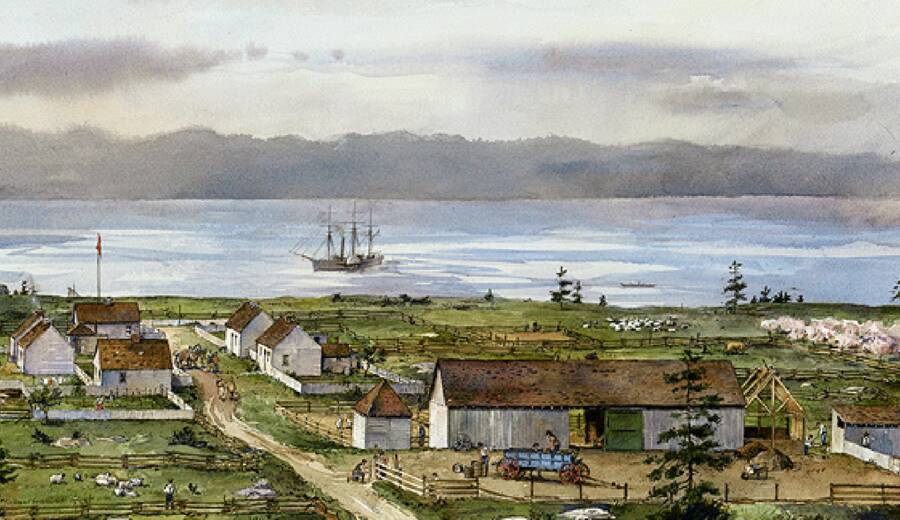
National Park ServiceA watercolor of Belle Vue Sheep Farm, as it appeared around the time of the Pig War.
Then, an American farmer shot and killed a British pig.
The Story Of The Bizarre Pig War Of 1859
On June 15, 1859, an American named Lyman Cutlar noticed a pig rooting around in his potato patch. It wasn’t just a pig — it was one of the Berkshire boars brought to the island by Charles John Griffin, the manager of Belle Vue Sheep Farm. And Cutlar had tried — and failed — to drive it off before.
This time, he took matters into his own hands. Enraged by the HBC herdsmen who stood by and snickered as the pig snacked on his potatoes, Cutlar raised his gun and fired.
As History Link reports, Cutlar quickly regretted his quick temper. He told Griffin what had happened and offered to replace the pig. But tempers flared when Griffin told him the boar had been worth $100. Cutlar protested that the animal could not be worth more than $10.
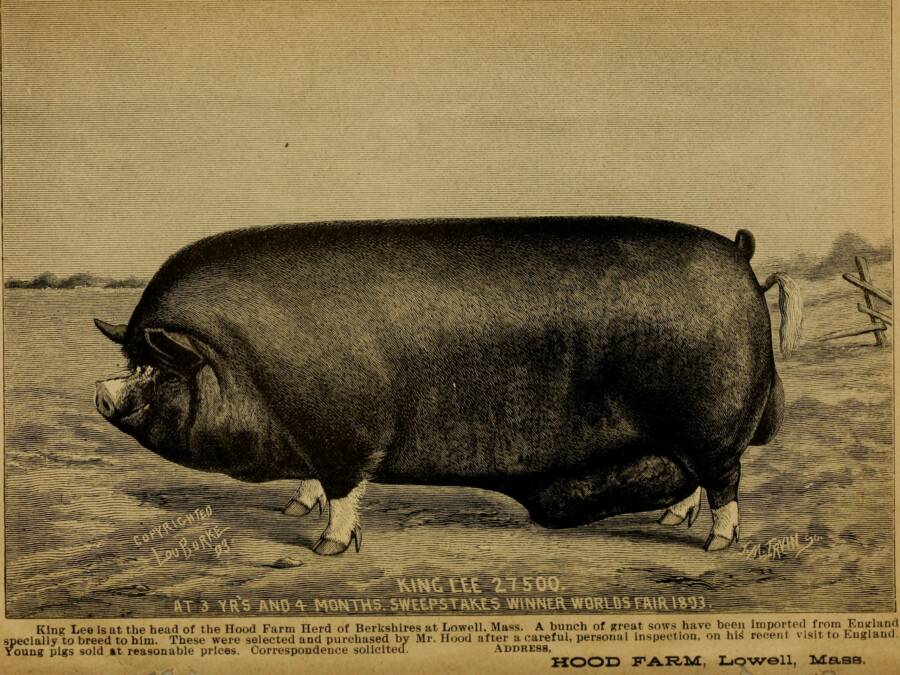
Wikimedia CommonsA Berkshire boar like the one killed by Cutlar, triggering the Pig War.
Cutlar told his fellow Americans that Griffin wanted to arrest him. They responded on July 4 by giving speeches, firing their guns, and raising an American flag outside the cabin of deputy customs collector Paul Hubbs.
When U.S. General William S. Harney heard about what happened — legend has it he noticed the American flag billowing in the wind as he sailed through the San Juans — he sent future Confederate general George Pickett to provide backup. Picket and dozens of soldiers arrived at the end of July.
Picket came armed with a proclamation: “This being United States territory, no laws, other than those of the United States, nor courts, except such as are held by virtue of said laws, will be recognized or allowed on this island.”
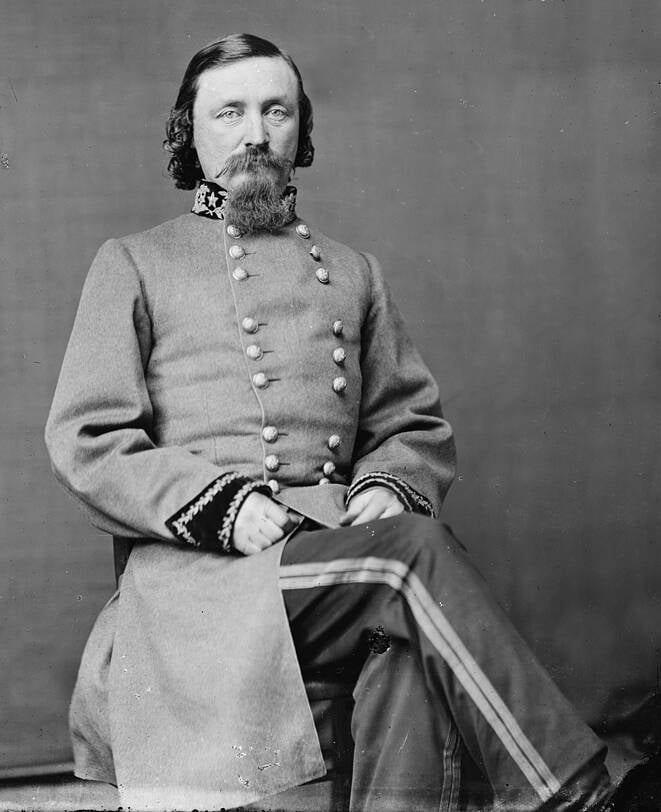
Public DomainBefore “Pickett’s Charge” made him famous in the Civil War, George Pickett played a role in the Pig War of 1859.
To the British this, of course, could not stand. James Douglas, the governor of British Columbia, sent three ships to back up the British claim: the 31-gun steam frigate HMS Tribune, captained by Geoffrey Phipps Hornby, and the warships HMS Satellite and HMS Plumper.
Pickett informed Hornby that if the British troops attempted to land on San Juan Island, he would stop them. As a result, the American forces on San Juan slowly grew into the hundreds, as five British ships carrying over 2,000 British soldiers sat waiting right off the coast. The two sides were at a stalemate.
But as the British conducted drills, and the Americans amassed cannons, cooler heads began to prevail.
How The Pig War Came To An End
When British Admiral Robert L. Baynes arrived on the scene, he purportedly told Douglas that he would not “involve two great nations in a war over a squabble about a pig,” according to the National Park Service. Meanwhile, news of the Pig War had reached Washington D.C., where it alarmed President James Buchanan.
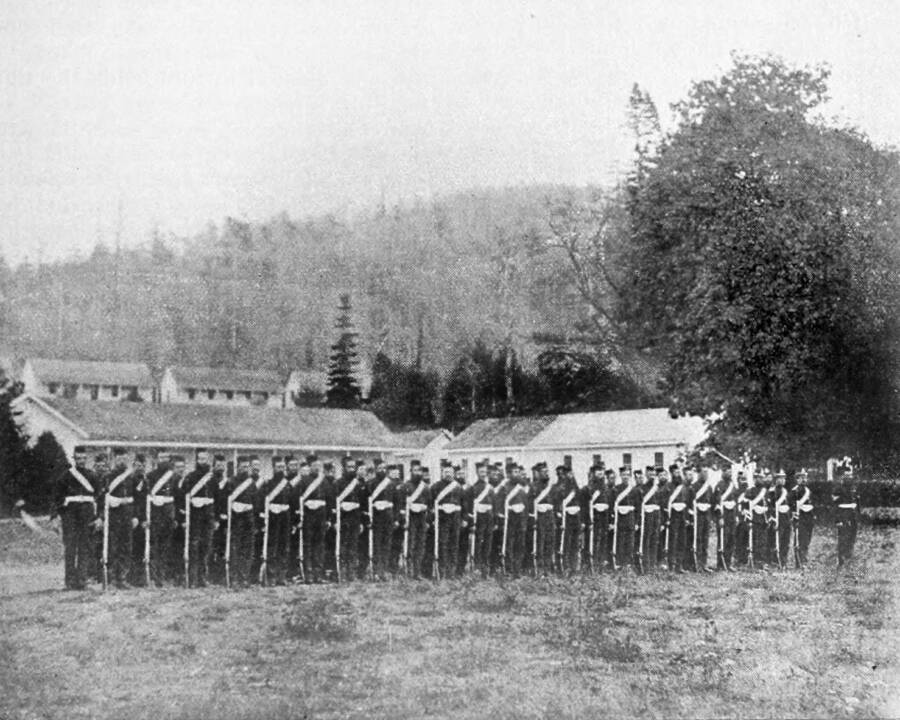
Public DomainBritish troops evacuating San Juan Island in 1872, after the island was deemed to be American — and not British — territory.
He sent General Winfield Scott, who embarked on a six-week journey from New York to San Juan to settle the conflict. He and Douglas worked together and arranged for both nations to withdraw their troops.
War had been averted.
But the question of San Juan Island still remained. It was not resolved until 12 years later, when the United States and Great Britain signed the Treaty of Washington. With the German kaiser presiding, it was decided that the U.S.-Canada border would run through Haro Strait. The San Juan Islands were, thus and forevermore, American territory.
Today, the islands are known for their panoramic views and local produce — and for the dubious honor of nearly starting a war over a dead pig.
Enjoy this article on the Pig War of 1859? Read about the War of Jenkins’ Ear, when a severed ear sparked a conflict between Spain and Britain. Then, discover the story of Australia’s strange war against emus in 1932.





